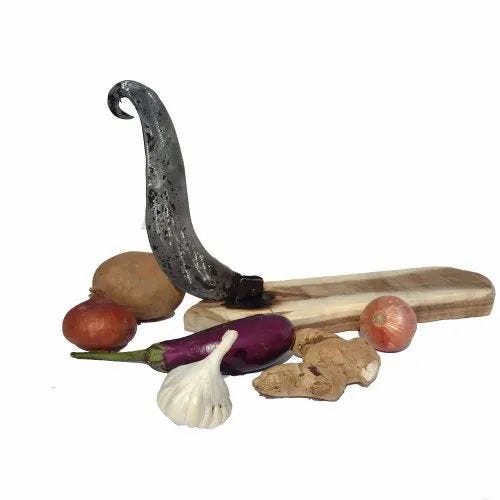If you like what we do, share our magazine with people. We want the magazines to find more homes.
If you want to support our work beyond the magazine, please consider becoming a paid subscriber. Your contributions will help us keep dhoop going for longer. As a paid subscriber, you will be the first to know all about ISSUE #3 theme, get recommended readings, events info, merch drops ( yes, totes are coming back!! ) and get a full preview of past issues.
Knead the dough, massage the oil, marinate the meat, ferment the pickle, roll the ladoos, peel, chop, stir, seal, grow, uproot, feed, clean, and repeat. When I decided on the topic of this newsletter a few weeks ago, I unknowingly began observing hands—what they do deliberately and what happens unintentionally. As an observer who didn’t actively engage in these tasks, I noticed the use of hands more easily.1 “To feel the flour” (Cooking by Hands, by Paul Bertolli), to mix the dosa blitzed dosa batter for it to ferment easily (son-mat or hand taste), to make haath ka khana, to scrub the pan with force, to squeeze the lime, to shape the roti— all might seem mundane, daily chores to some, but to an observer viewing them in isolation, they show the ways our hands construct and build the world around us.
From dogmatic customs—eating with the right hand, avoiding pickles while menstruating—to more widely understood notions of the luxury of handmade versus machine-made, the association of hands with craft is deeply embedded in cultures. The latter is effectively communicated by brands that emphasise the effort behind producing something; after all, a video of an assembly line wouldn’t evoke the same emotional response as seeing people using their hands to make the things we consume, right?
When I was finishing my dissertation on commensality at street food stalls2, the head of my institution’s language centre raised a concern—hygiene. Though it wasn’t the focus of my research, it was all they could think about: the potential for people getting sick. My usual response was to reinforce the scope of my research, often adding a remark about how the food was too good not to try.
I understand that for those who have grown up in sanitised environments, the absence of strict hygiene standards can be unsettling. Different generations have different perceptions of purity, hands, and handmade food. For instance, Singapore imported all its milk due to the lack of domestic dairy production. In 1909, Milkmaid placed an ad in prominent newspapers stating that the product was “Untouched by hand.” The phrase wasn’t just about hygiene—it reassured consumers of sterility, emphasising that the product had been kept far from human hands.3

In India, the notion of food made by hand took a different route. Advertisements were saturated with maa ke haath ka khana, alluding to an ideology that seemed commonplace. This marketing strategy romanticised haath ka khana and reinforced gender roles so effectively that it became one of the most dominant ways to evoke nostalgia—one that is constantly revisited. Somehow, the idea of maa/nani/dadi ke haath ka khana almost always sparks something positive, effortless, and delicious.4
This concept, ingrained in our minds, accomplished two things. First, it became a powerful marketing tool, making products more relatable and, therefore, more sellable. Second, by reinforcing what we inherently believed to be the role of women, it planted the seed of what could later become nostalgia, ensuring that the concept remained marketable in the future.
However, it doesn’t stop at capitalism. It brings me back to the concept of the ideological state apparatus (Louis Althusser)5, which Anne Allison explores in Japanese Mother and Obentōs: The Lunch Box as Ideological State Apparatus. In this paper she describes “how food is coded as a cultural and aesthetic apparatus in Japan.”6
In the article, Allison examines the pressures of assembling an obentō that is not only nutritious and seasonal but also aesthetically pleasing. “The obentō comes to be filled with the meaning of mother and home in a number of ways. The first is sheer labor… on average, mothers spend twenty-five to forty-five minutes every morning cooking, preparing, and assembling the contents of one obentō for a nursery school child.” The obentō, much like a tiffin, becomes a marker of a woman’s ability to cook delicious food for her child. I remember my two best friends fighting over my tiffin whenever I brought something they wanted. Also, we were always excited to visit a friend’s house whose mother made the best tiffin – kala chana, aloo sabzi and cold parathas.
This commonsense acceptance of a particular world is the work of ideology, and it works by concealing the coercive and repressive elements of our everyday routines but also by making routines of everyday familiar, desirable and simply our own.
In the context of mothers and obentōs, Allison draws from Althusser’s notion of ideological power to elaborate that “ideology is so potent because it becomes not only ours but us—the terms and machinery by which we structure ourselves and identify who we are.”
I cannot help but draw parallels between mothers in Japan and mothers in India, both of whom are constantly trying to fit into a version of reality that has been imagined for them. This version of reality casts them as dutiful caregivers who must also possess the skill to cook delicious food for their children and extended families.
Maa ke haath ka khana has gone beyond being a marketing strategy—it has become the lens through which we view food from our distant past. Or, more accurately, the way we continue to reimagine nostalgia, over and over again.
A visual documentation of “hand-like tools”
It’s difficult to observe something when you’re the one doing it.
Untouched by Human Hands: Making and marketing milk in Singapore, 1900–2007 by Nicole Tarulevicz was published in the Routledge Handbook of Food in Asia 2019.
This idea only describes how maa ke haath ka khana was generally viewed. It might not indicate all kinds of experiences one has had with homecooked food or food cooked by mothers/grandmothers.
This was a great introduction to how the Ideological State Apparatus operates in practice.
Japanese Mother and Obentōs: The Lunch Box as Ideological State Apparatus by Anne Allison became a great resource for this newsletter. Read it!
Food is a portal to understanding our world, our communities and ourselves. It provides a unique and critical perspective on everything—from everyday habits to global issues, from the way we design our countries, cities to how we navigate climate crises.
dhoop uses food as a lens. Through this lens, we can interrogate culture, sustainability, design and the systems that sustain life. Initially, we started as a magazine focused on stories of food and its intersections. Over time, it has grown into something more profound—a space, a research platform, embracing a multidisciplinary approach that invites collaboration and deeper inquiry.












